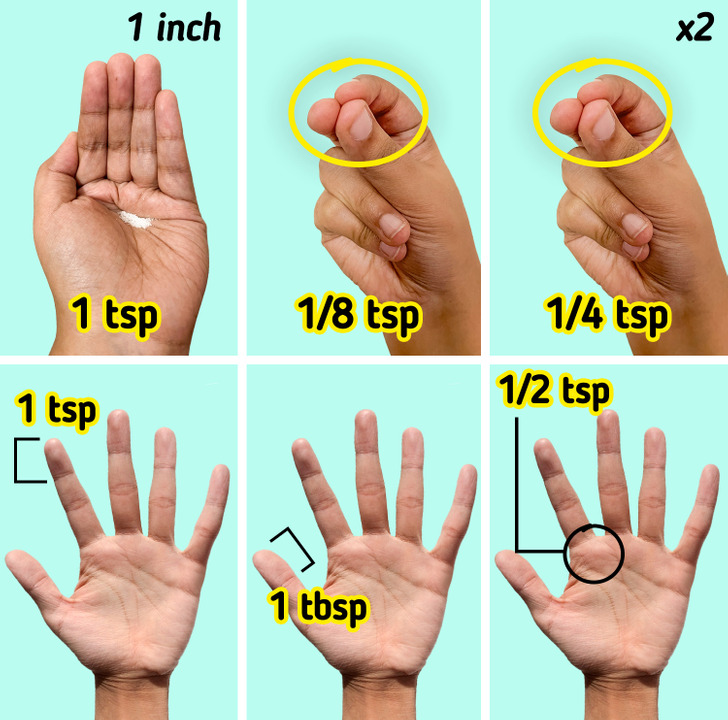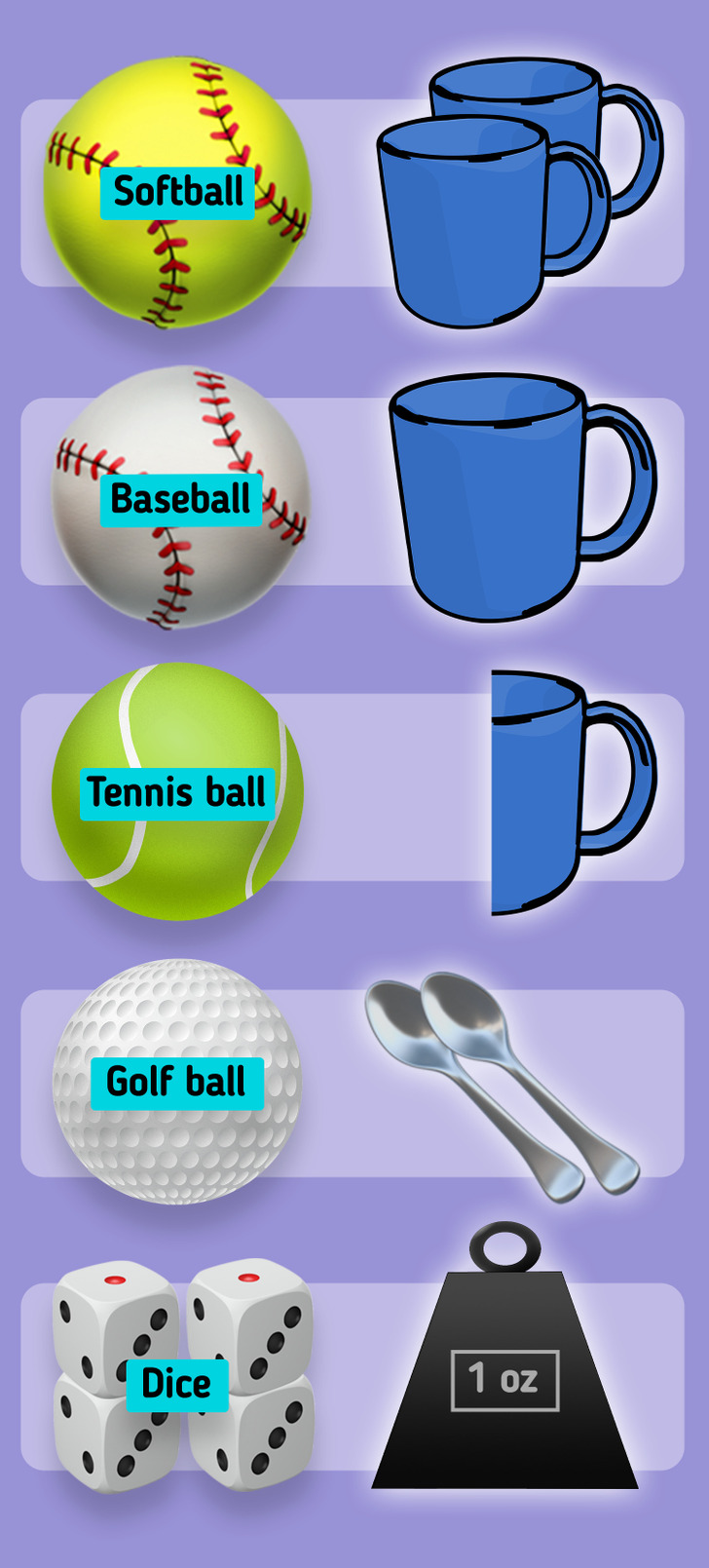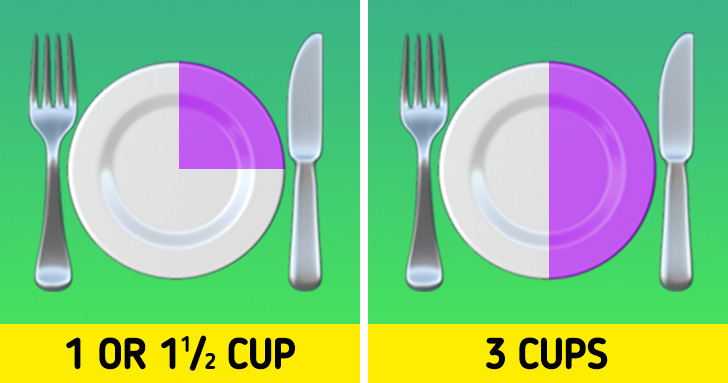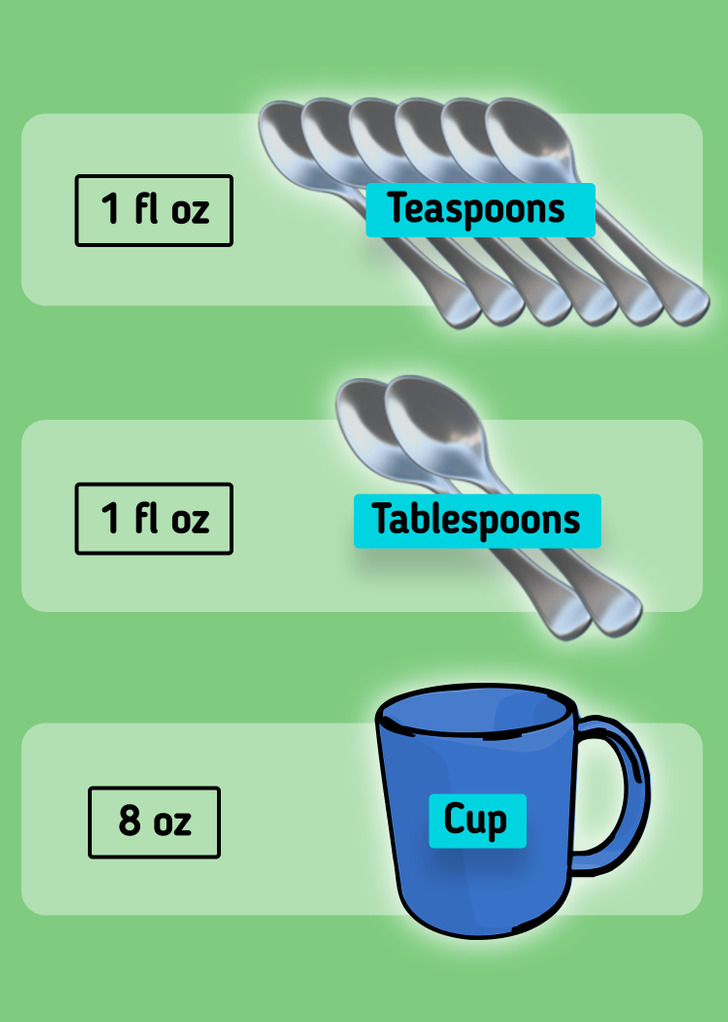10+ Life Hacks to Weigh Food Without a Scale
We need to accurately measure and observe each ingredient’s weight and ratio for successful cooking or baking. Not everyone may have a digital scale lying around for the best results, but there’s no need to worry. We can weigh the products with the help of different kitchen tools, such as spoons, cups, and even your hands, in addition to your favorite sports equipment too.
5-Minute Crafts prepared a short guide to share some tricks on measuring your ingredients without a scale while making as many conversions as possible.
Using the hands
This method is called eyeballing, where you gauge, estimate, or judge ingredients to be used in cooking. This can be done with a variety of objects, even your own hands. Here’s how you can do it:
- You can measure salt with your palm. Begin by cupping your palm then pouring salt in the pit of your palm until it’s an inch across. This equates to about a teaspoon of salt.
- When you pinch salt between your index finger, second finger, and the thumb, it’s 1/8 teaspoon.
- When you do the previous step twice, it’s about 1/4 teaspoon.
- A mound in your palm just under your index finger is 1/2 teaspoon.
- The tip of your thumb is around 1 tablespoon.
- The tip of your index finger is equal to 1 teaspoon.
Using your favorite sports equipment
The sizes of our hands can be bigger or smaller, and that can impact the measurements of ingredients. In this case, you can also use your favorite sports equipment to get things right. Here’s how:
- 1 softball is equivalent to 2 cups.
- 1 baseball is equivalent to 1 cup.
- 1 tennis ball is equivalent to 1/2 cup.
- 1 golf ball or ping pong ball is equivalent to 2 tablespoons.
- 4 dice are equal to an ounce.
Using a plate
You can also measure food on your normal dinner-sized plate. This trick is applicable if you’re using a 10.5-inch plate to learn the measurements.
- If 1/4 of your plate is full, it means it’s equivalent to 1 or 1 1/2 cups or 8 to 12 ounces.
- If 1/2 of your plate is full, it means it’s equivalent to 3 cups or 1.5 pounds.
With cups and spoons
When measuring food with cups and spoons, we must understand the difference between ounces and fluid ounces. The former determines the weight of a solid matter, whereas the latter determines the volume of liquid matter. The rule of thumb for liquid matter is 1 cup = 8 ounces as mentioned below.
- Ounces to teaspoons: 1 fluid ounce is equivalent to 6 teaspoons. So if you need 2 ounces of a liquid for a recipe, you can use 12 teaspoons instead.
- Ounces to tablespoons: Here, 1 fluid ounce is equivalent to 2 tablespoons. So if the recipe calls for 4 ounces, you can use 8 tablespoons to measure.
- Ounces to cups: 1 cup equals 8 ounces. So if you need a pound of shredded chicken, you can use 2 cups instead.



